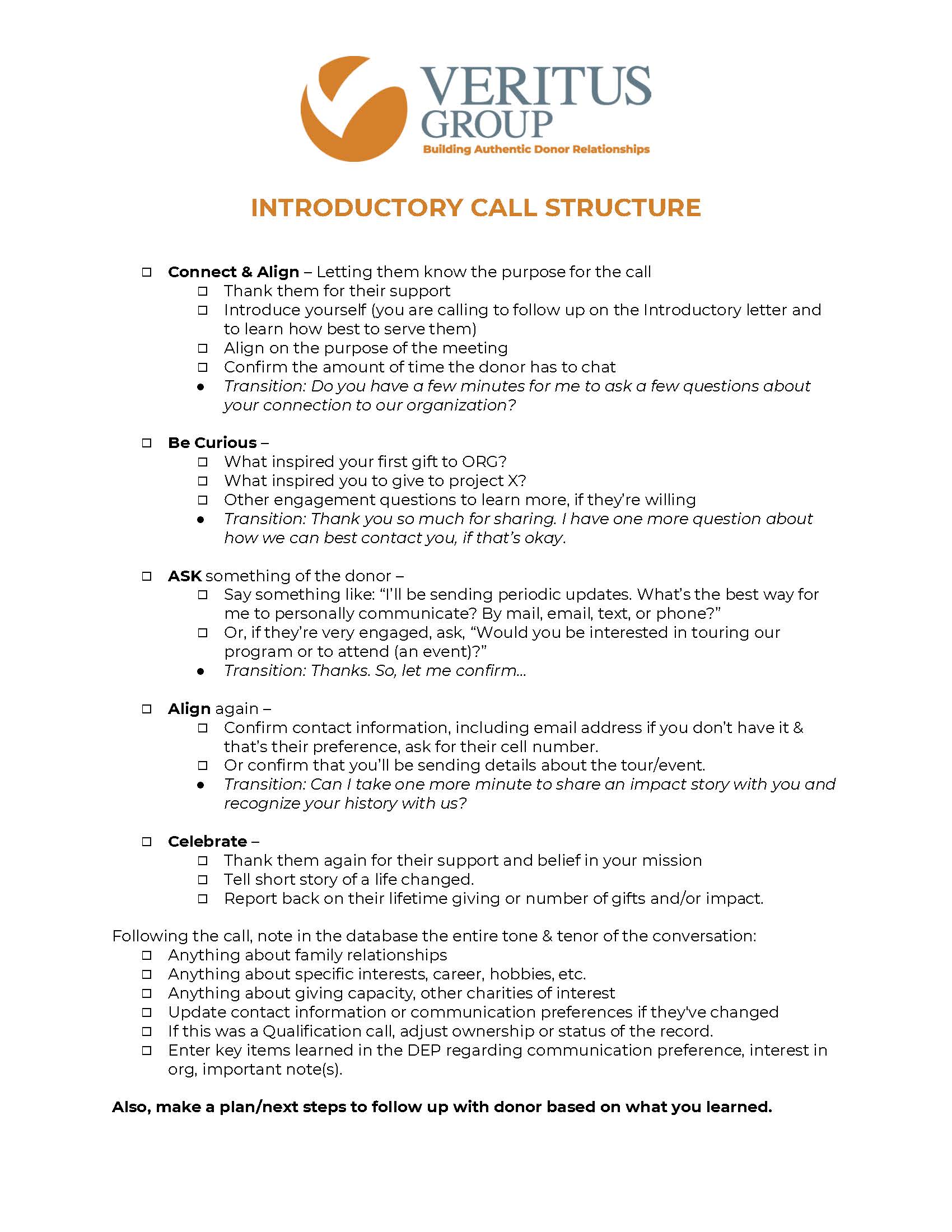This is the perfect time to sharpen your donor connection skills. And one area I want to focus on today is what we typically call “cold calling,” although I’d like to advocate that we rename this term!
First, let’s remember that the people you are calling are generous humans who are already giving to your cause, so this is a call to begin finding out more about who they are, what they care about, and if they even want to have conversations at all, which is also helpful data. You are creating an opportunity for a meaningful connection.
Now, let’s take a look at all the great skills you already do have and what new ones you can add to your toolbox for your next donor call.
You might be a natural conversationalist where calling up donors comes easily for you. Or maybe thought of having to call donors makes your palms sweat and your natural inclination is to do ANY other task vs make those calls. No matter where you fall on the spectrum of donor calling this checklist can be helpful.
Why? If you are a natural, you might be relying on your relational skills to have a conversation which is great, but you also want to make sure that you move the relationships forward and learn something you don’t already know.
On the other hand, if you are nervous about calling donors you don’t know, this template can help you prepare, make the conversation more natural, and build your confidence.
At Veritus we use this checklist in our mid-level introduction series and major gift qualification process to connect with donors more meaningfully.
This is an especially great time of year to be sharpening your calling skills and increasing your confidence since many donors tend to answer calls more during this holiday season.
Here is how I recommend using the Introductory Call Structure (shown below): First go through the sections and develop your own language for each type of call you want to make. Practice the language and make sure it feels authentic to you. I’ve shared some examples of language with you below.
- Create your own template with your own language to use as a cheat sheet while on calls.
- Before every call spend the few minutes getting clear on the objective you would like to accomplish with that call.
- You may prefer to type answers to questions when you call or jot down notes so get your paperwork ready on your computer or printed out if a donor is available to chat.
- Note: This call structure is using the Permission Based Asking Model as a guide. To learn more click on this link.
Introductory Call Structure Checklist

Connect/Align/Confirm Time
We recommend that if you don’t already know a donor you practice doing all three of these within your first comment quickly and clearly. This will lower fear and concern from your donor that you are calling to ask for money or take too much of their time.
- Thank them for their support:
- You are calling to introduce yourself and follow up on the Introductory letter:
Hi Hashim, my name is Karen Kendrick from ORG and I’m calling to say thank you and to ask a few quick questions about how we can be a better partner to you. Do you have a few minutes to chat?
Transition: Thank them for their recent gift or years of giving and then ask, “Do you mind if I ask you a few questions about your connection to our organization?”
Be Curious
This is your time to ask meaningful, relevant, and valuable questions that will give you critical information about the donor’s passions, interests, and communication preferences.
Some sample questions include:
- Do you mind if I ask what inspired your first gift to ORG?
- Do you mind if I ask what inspired you to give to project X?
- Do you mind if I ask of these three areas of our work (X,Y,Z) which one are you most passionate about?
- What about the project most inspired you?
- What have you heard back about the impact of your giving that meant the most to you?
- What are questions you have had about this work and mission?
- What was one of your most meaningful giving experiences to any organization?
Transition: After you have asked a few follow up questions and been in conversation note the time and transition to the next question. “Thank you so much for sharing. I have one more question about how we can best contact you, if that’s okay?”
ASK something of the donor
- Say something like: “I’ll be sending periodic updates. What’s the best way for me to personally communicate? By mail, email, text, or phone?”
- Or, if they’re very engaged, ask, “Would you be interested in touring our program or to attend (an event)?”
Transition: Thanks. So, let me confirm …
Align again
- Confirm contact information, including email address if you don’t have it & that’s their preference, ask for their cell number. Remember once you ask, please make sure you note that preference and follow that in your communications. Knowing this doesn’t mean you can never send another type of communication but keep to their preference if at all possible.
- Or confirm that you’ll be sending details about the tour/event.
Transition: Can I take one more minute to share an impact story with you and recognize your history with us?
Celebrate
Thank them again for their support and belief in your mission: Hashim thank you again for your dedication and support over the years!
Or, report back on their lifetime giving or number of gifts and/or impact: Hashim do you realize that you have given monthly for the past four years giving a total of X! Thank you so much for your dedication over the years!
Following the call, note in the database immediately! Taking notes helps you remember the key elements but the sooner you note your learnings in your CRM your memory will be fresh and you will catch the more subtle details.
- Anything about family relationships
- Anything about specific interests, career, hobbies, etc.
- Anything about giving capacity, other charities of interest
- ̈If this was a Qualification call, adjust ownership or status of the record
- Interests and passions related to your mission
- Communication preferences
Also, make a plan and identify next steps to follow up with donor based on what you learned.
Lowering your stress about making calls by having a clear plan and approach will help you start each conversation with warmth, curiosity and openness which impacts how your donors feel when they pick up the phone. And if you are well prepared, have a clear objective and are prepared with great open needed questions to ask your donors will feel seen, honored and heard, which sets the partnership up for great things in the future.
Karen
![Get Your Donor Calling Muscles with this Checklist Business woman, phone call and talking with laptop, for conversation and planning. [Get Your Donor Calling Muscles with this Checklist]](https://veritusgroup.net/wp-content/uploads/2024/10/AdobeStock_552558019.jpeg)
![Bored fundraiser writing thank you note. [Does Your Thank You Message Need a Refresh?]](https://veritusgroup.net/wp-content/uploads/2022/12/AdobeStock_484461975.jpeg)

![Businessman holds smartphone to his forehead while closing his eyes in a moment of fear. [How to Face Your Fears About Cold Calling a Donor]](https://veritusgroup.net/wp-content/uploads/2023/03/AdobeStock_108136348-1.jpeg)



0 Comments